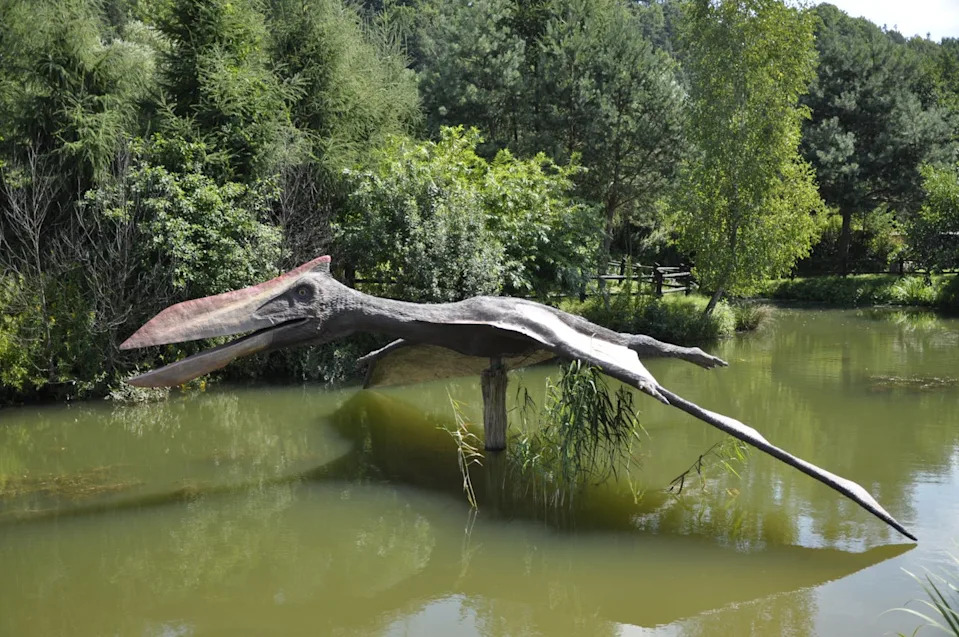Science
Giant ‘Bony-Toothed’ Birds Dominated Antarctica 50 Million Years Ago

New fossil discoveries from Seymour Island, located off the Antarctic Peninsula, reveal that giant bony-toothed birds, known as pelagornithids, soared over Antarctica approximately 40 to 50 million years ago. These findings suggest a vastly different ecosystem during the Eocene Epoch, indicating that the region was warmer and more diverse than the icy landscape observed today.
The fossils unearthed on Seymour Island include remains of frogs, various plants, and marsupials, shedding light on a time when Antarctica was home to a variety of life forms. This rich assemblage hints at historical connections between Antarctica and other continents in the Southern Hemisphere. In addition to the familiar penguins, fossil evidence suggests the presence of duck, falcon, and albatross relatives during this period.
In a study published in 2020, Peter A. Kloess from the University of California, Berkeley, and his colleagues detailed the significance of pelagornithids, a group of birds that dwarfed others on Seymour Island. The fossils indicate that these birds had an impressive wingspan of around 21 feet, nearly double that of the modern-day wandering albatross, which boasts a wingspan of approximately 11.5 feet.
The Rise of the Pelagornithids
Pelagornithids are distinguished by their unique adaptations, featuring sharp, bony spikes resembling teeth along their jaws, which helped them hunt for squid and fish. This evolutionary trait provided them with a competitive advantage in a world recovering from the mass extinction event that wiped out the dinosaurs and pterosaurs around 66 million years ago.
After this extinction, birds flourished, diversifying into thousands of species. The earliest pelagornithids, discovered in sediments dating back 62 million years in New Zealand, were roughly the size of modern gulls. The giant pelagornithids studied by Kloess and his team emerged about 10 million years later, taking to the skies above Antarctica during the Eocene Epoch.
Fossil remains of pelagornithids have been located on every continent, indicating their widespread presence. Despite thriving for about 60 million years, this impressive lineage faced extinction just before the Pleistocene Epoch, with climate change suggested as a possible factor, although the exact reasons remain uncertain due to a limited fossil record from that transitional period.
Uncovering the Past
The fossils examined by Kloess’s team are fragments collected by paleontologists in the 1980s. Initially housed at the University of California Museum of Paleontology in Berkeley, these specimens provide critical insights into the size and characteristics of the pelagornithids. Although the collection lacks enough material to reconstruct a complete skeleton, estimates indicate that their skulls could reach about 2 feet in length, with lower jaw fragments revealing “pseudoteeth” measuring up to an inch tall.
Additional evidence supporting the size of these Antarctic birds comes from another fossil found at a different location on Seymour Island. A tarsometatarsus, a section of a foot bone, represents the largest known specimen of the entire pelagornithid group, underscoring the importance of these discoveries.
The findings from Seymour Island emphasize the value of natural history collections. While new field expeditions yield significant discoveries, much can also be learned from the backlog of specimens awaiting study in museums. The ongoing work of paleontologists continues to enhance our understanding of ancient ecosystems and the remarkable creatures that once inhabited them.
This research highlights the dynamic nature of paleontology and the potential for uncovering new insights from existing collections. As scientists continue to analyze and publish findings based on these fossils, they shed light on the rich history of life on Earth, including the giants of the past that once ruled the skies above Antarctica.
-

 Lifestyle4 months ago
Lifestyle4 months agoLibraries Challenge Rising E-Book Costs Amid Growing Demand
-

 Sports4 months ago
Sports4 months agoTyreek Hill Responds to Tua Tagovailoa’s Comments on Team Dynamics
-

 Sports4 months ago
Sports4 months agoLiverpool Secures Agreement to Sign Young Striker Will Wright
-

 Lifestyle4 months ago
Lifestyle4 months agoSave Your Split Tomatoes: Expert Tips for Gardeners
-

 Lifestyle4 months ago
Lifestyle4 months agoPrincess Beatrice’s Daughter Athena Joins Siblings at London Parade
-

 World4 months ago
World4 months agoWinter Storms Lash New South Wales with Snow, Flood Risks
-

 Science4 months ago
Science4 months agoTrump Administration Moves to Repeal Key Climate Regulation
-

 Science3 months ago
Science3 months agoSan Francisco Hosts Unique Contest to Identify “Performative Males”
-

 Business4 months ago
Business4 months agoSoFi Technologies Shares Slip 2% Following Insider Stock Sale
-

 Science4 months ago
Science4 months agoNew Tool Reveals Link Between Horse Coat Condition and Parasites
-

 Sports4 months ago
Sports4 months agoElon Musk Sculpture Travels From Utah to Yosemite National Park
-

 Science4 months ago
Science4 months agoNew Study Confirms Humans Transported Stonehenge Bluestones









